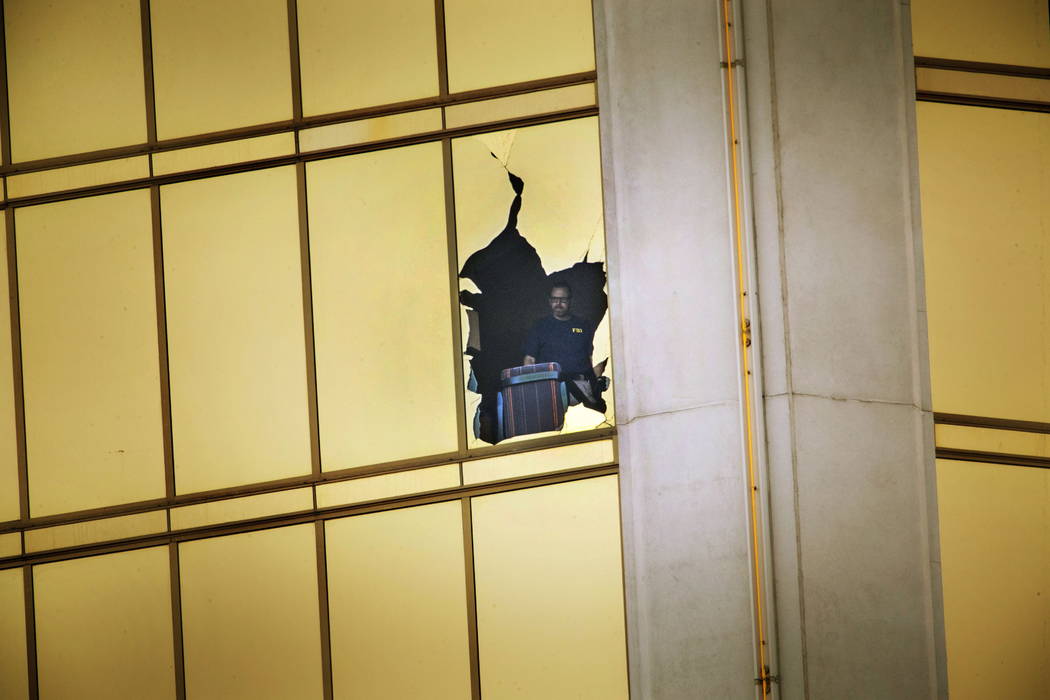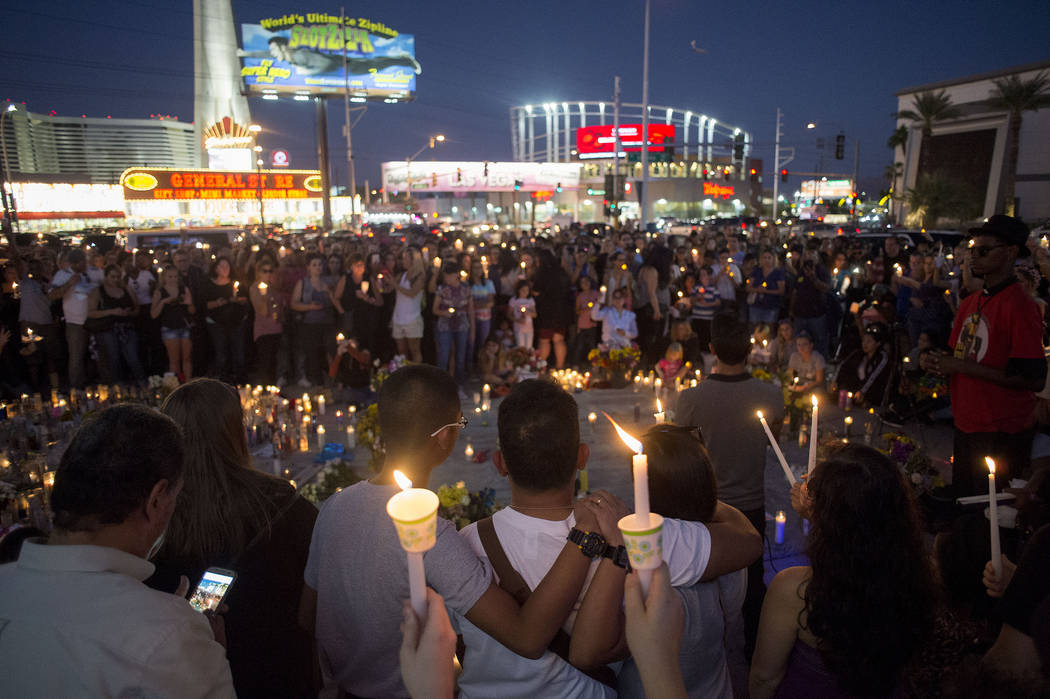Gunman in Las Vegas shooting worked hard to cover tracks
In the months leading up to the Oct. 1 shooting, Las Vegas gunman Stephen Paddock methodically planned a massacre, carefully sidestepping detection by authorities.
But even in death, he continued to perplex, according to more than 300 pages of federal search warrant records a judge ordered unsealed Friday after the Las Vegas Review-Journal and other media organizations sued for their release.
The motive behind the shooting, which left 58 dead and more than 500 injured, remains unknown, and the documents suggest that may be because Paddock took many steps to “thwart the eventual law enforcement investigation.”
He concealed or deleted all of his digital storage. He used at least one prepaid cellphone, though three phones were found in his Mandalay Bay suite. And in the year leading up to the shooting, he collected an arsenal of weapons and ammunition, mostly purchased from internet retailers, along with glass cutters and “numerous” suitcases, according to the documents.
It took investigators several days to realize just how well Paddock had covered almost all of his bases.
“The methodical nature of the planning employed by Paddock, coupled with his efforts to undermine the preceding investigation, are factors indicative of a level of sophistication which is commonly found in mass casualty events such as this,” the documents read.
Purchases, health reviewed
Inside his suite, authorities found more than 20 guns, hundreds of spent cartridge cases, hundreds more rounds of unused ammunition, a homemade gas mask and a set of body armor, among other items.
One of his last purchases, a holographic weapon sight whose average cost is about $400, was made in September through an Amazon account associated with Paddock, then delivered to his Mesquite home. Investigators believe it was used in the attack.
The records released Friday were partial and mostly included requests to search Paddock’s homes, digital devices and email accounts. The documents did not include the findings of those searches, which were individually approved by a handful of Nevada judges.
Included in the documents was a chain of short, cryptic emails Paddock apparently sent himself in July, from two different accounts, which read like weapons advertisements and mentioned AR rifles and bump stocks.
Investigators have been “unable to figure out” why Paddock apparently sent the messages to himself, but through search warrants, they sought more information about the email accounts, including whether one of them may have been associated with someone else.
Paddock’s health was also called into question. The documents note that as early as Oct. 7, the investigation had revealed that Paddock “may have been treated for yet unidentified medical conditions.” It remains unclear what those conditions could have included.
On Oct. 3, the Review-Journal reported that in June a Henderson physician had prescribed Paddock an anti-anxiety drug — diazepam, its brand name Valium — that can lead to impulsive and aggressive but not necessarily premeditated behavior. Paddock picked up the drug in Reno without insurance the same day, records show.
Girlfriend backs FBI findings
Two of the phones found in Paddock’s hotel suite were unlocked but yielded no “significant” information, according to the documents. The third phone, a ZTE model with a Google operating system, was locked and cannot be forensically examined, but the FBI hoped to glean more information off it via Google.
Though investigators had previously said Paddock had no known social media accounts, the records also included requests to access at least four different Instagram accounts which may have been associated with either Paddock or his girlfriend, Marilou Danley.
Authorities also requested access to Danley’s Facebook account, which she deleted shortly after the shooting.
In an interview with the FBI in the days after the massacre, Danley, who was in the Philippines at the time of the attack, quickly corroborated many of the FBI’s findings but remained adamant that she had no foreknowledge of Paddock’s plans.
Email records reviewed by investigators confirm that Paddock transferred an undisclosed amount of money to Danley in September for unknown reasons. And while, as of October, investigators had not found any conclusive evidence that Danley assisted Paddock in any way, she remained “the subject of intensive review,” according to the documents.
The Review-Journal and other media organizations continue to sue for the release of several other Las Vegas shooting records, including body camera footage and 911 calls.
Contact Rachel Crosby at rcrosby@reviewjournal.com or 702-477-3801. Follow @rachelacrosby on Twitter. Review-Journal reporters Wade Tyler Millward and Amelia Pak-Harvey contributed to this report.
























